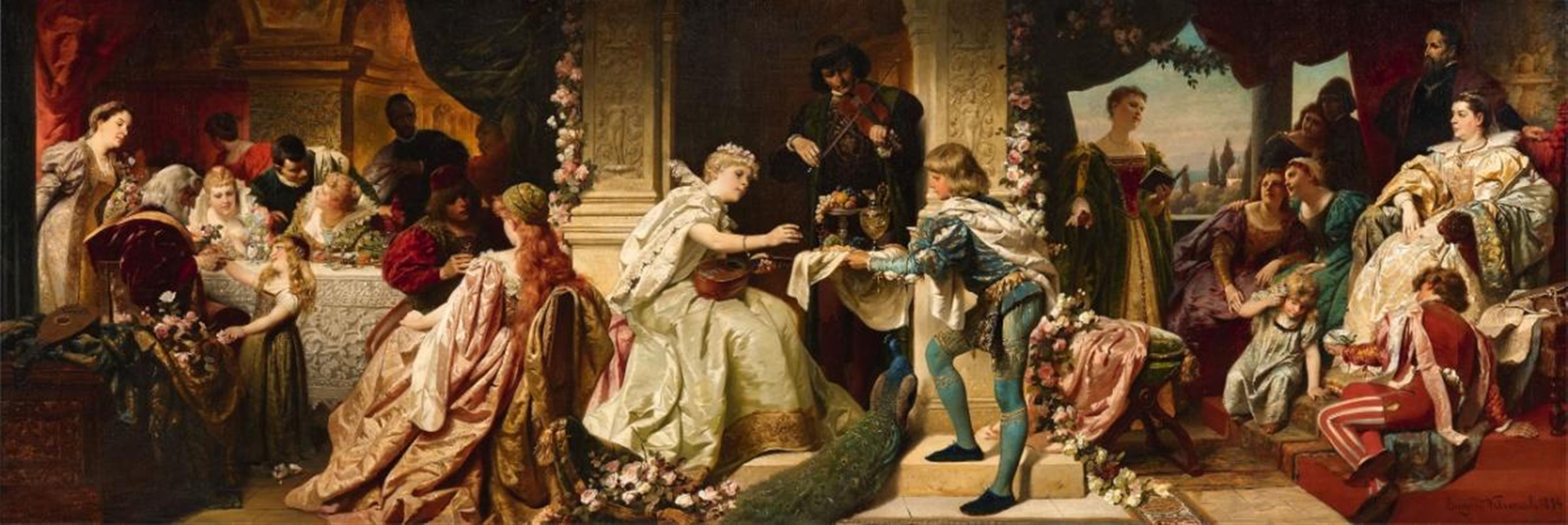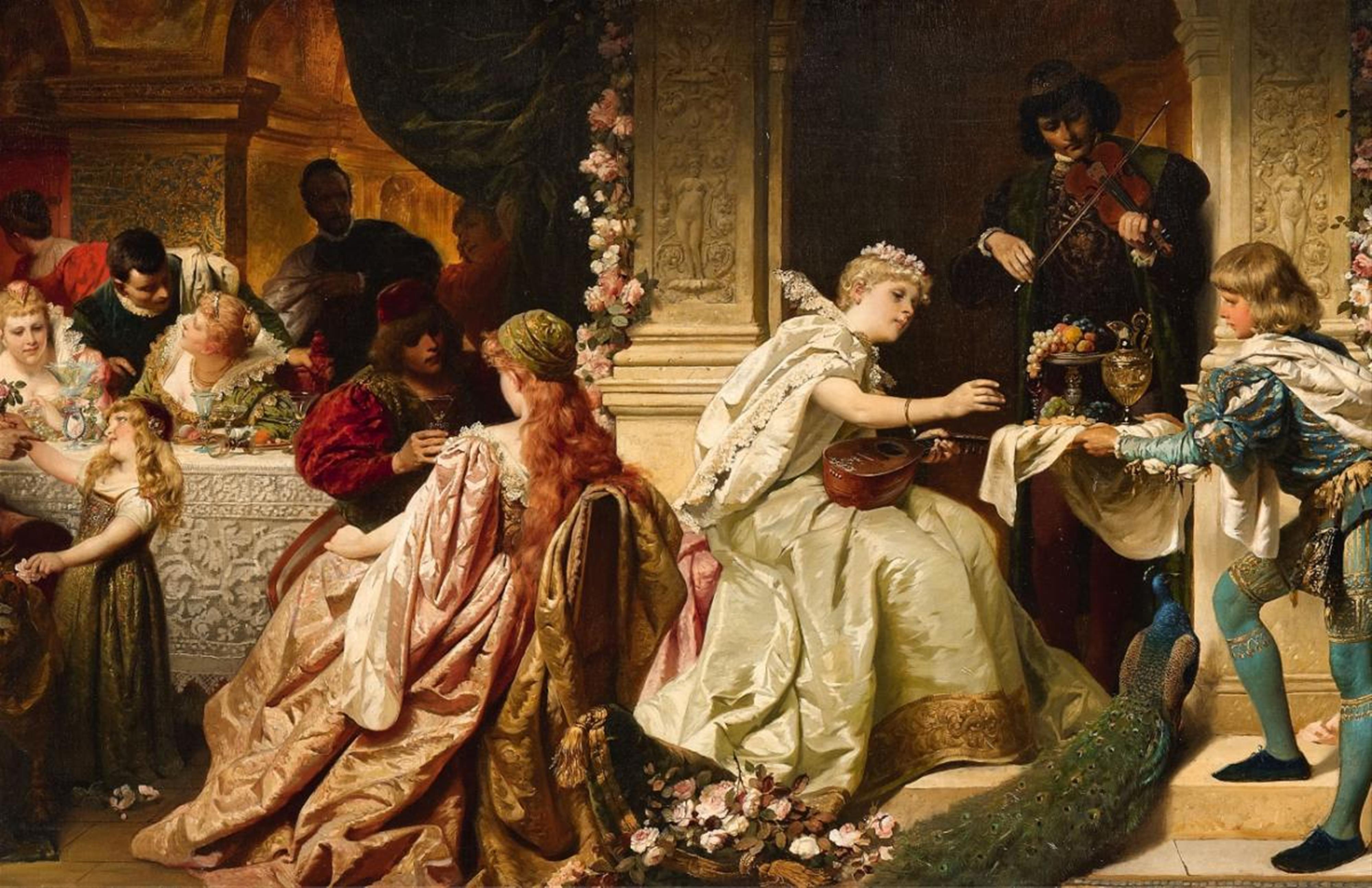Eugen Klimsch
The Party
Oil on canvas. 103 x 311 cm.
Signed and dated lower right: Eugen Klimsch. 1894.
Eugen Klimsch, father of the sculptor Fritz Klimsch, came from a family of artists in Frankfurt. He received his initial training from his father at a young age, and later attended the Höhere Gewerbeschule and the Städel'sche Kunstinstitut in Frankfurt, before moving to Munich in 1860 to train further. Klimsch returned to his home town after five years and began teaching there at the Kunstgewerbeschule. He later took over management of the Städel'schen Malschule, but died unexpectedly just a year later. E. Ph. J. Hallenstein published an extensive biography of the artist in “Die Kunst unserer Zeit. Eine Chronik des modernen Kunstlebens“ (vol. VII, p. 45-60), which he closed as follows: “The artist had a happy home life, was loved and cherished by his many friends, admired in numerous circles and respected by everyone, until a strange and terrible twist of fate tore him from us.”
Klimsch was an unusually versatile painter, creating both large frescoes - such as those made for the great hall of the Palmengarten in Frankfurt - and miniatures on vellum and ivory. He also designed dining halls for several passenger ships and worked with great success as an illustrator of children's books and of classical works such as Goethe's “Dichtung und Wahrheit”. Alongside this he also designed bank notes, menus, certificates and advertising posters.
Like the great Viennese painter Hans Makart, Klimsch often refers to the works of the old masters in his panel paintings. In his oeuvre we find allusions to 17th century Netherlandish painting, the French Rococo and Empire style. The costumes of this monumental work can be dated to the Renaissance and the early Baroque, but the painting's motif remains a mystery. It appears to be a courtly festival, possibly taking place in Italy, and the hosts are apparently the lady seated on a pedestal to the right and the man beside her. The artist has separated the rectangular composition into three distinct zones, separated by carved columns. Between them we see a page offering refreshments to two musicians, the food on the tray creating a masterful still life to the centre of the piece. To the right of the image, a lady is reciting poetry beside the hosts, surrounded by a group of eager listeners, and in the left section we see a group of guests around a festively laden table. The charm and quality of this unusual work is evident in the opulent, shimmering fabrics of the costumes, the porcelain skin of the figures, the richly decked tables and architecture of the room, which provides a view into a further banquet hall on the right and a Mediterranean coastal landscape on the left, as well as the work's fresh, lifelike colouring and abundance of fascinating motifs.




